
Veganuary is upon us. A charity campaign focused on supporting veganism which promotes the reduced consumption of animal products such as dairy, eggs, meat, poultry, fish and honey. While eating more vegetables, fruits and whole grains is simple — substituting ingredients in our favourite dishes may be more of a challenge. Read on for our in-house nutritionist’s top vegan shopping tips:
Swap milk for plant-based milks
Who hasn’t tried a plant-based milk in their latte these days? Whether you prefer almond or oat, soya or coconut, make sure you choose one that is unsweetened and opt for a choice with less additives and preservatives. We like Plenish’s plant based options that only contain three ingredients, and their almond milk froths the best.
Swap honey for maple syrup or date syrup
Love a swirl of honey on your morning yogurt? Think again this January. Honey is not classified as vegan as it is a by-product from bees. Swap this with maple syrup or date syrup – both unrefined sweeteners made from plant sources. MEDA wellness drinks and MEDA mixers use maple syrup as a sweetener so they are suitable for vegans.
Swap butter for plant-based spreads
If marmite and butter on toast is your thing, then try out a plant-based spread instead. I like Pure Dairy Free Olive Oil spread as it is free from artificial flavours, colours, preservatives and additives and contains healthy monounsaturated fats. Plus, it spreads well!
Swap cheese for cashew alternatives
Cheese can be a hard vegan swap. There are a number of products on the market however many of them can be rubbery, tasteless or filled with preservatives and additives. The healthiest option — try some nut cheese. We like Mouse’s Favourite cashew brie or the Kinda Co almond feta.
Swap chicken for tofu or tempeh
2020 saw the exponential rise of vegan/vegetarian meat substitutes. Whilst some of these are on the healthier side there are others that are packed with ingredients you can’t pronounce, and they can be highly processed. Tofu and Tempeh on the other hand tend to be less processed and packed with plant-protein. Try adding these into a stir fry, thai green curry or in a salad instead of chicken. We love the Tofoo company Tempeh and tofu nuggets.
Swap beef for lentils/beans
Burgers, chilli and lasagne are not entirely off the card’s friends! Make simple swaps. Use lentils instead of mince in your lasagne/bolognaise, kidney beans in your chilli con carne or black beans as the meat substitute in a burger. The added plus? Pulses are filled with fibre, plant-protein, and good for your wallet too.
Swap eggs in baking with chia eggs
Eggs act as a rising agent and binder in cakes and baking, so with vegan baking we can often find cakes can turn out to be crumbly or flat. Try chia eggs which can help act as a binder in recipes that don’t need to rise i.e waffles, pancakes, breads and cookies. Simply mix 1 tbsp of chia seeds with 2.5 tbsp of water. Leave for 15 minutes and then mix again. You will notice that they form a gloopy consistency, and there you have it, a chia egg!
Make sure you are covering your nutrients
If you are intending to follow a vegan diet for longer than Veganuary, make sure you cover your intake of B12 (only found in animal foods), Vitamin D (very difficult to obtain in the winter and on a vegan diet), Calcium (can be low to reduce calcium from dairy) and Iodine (found in fish and dairy). Consider fortified plant options or supplements.
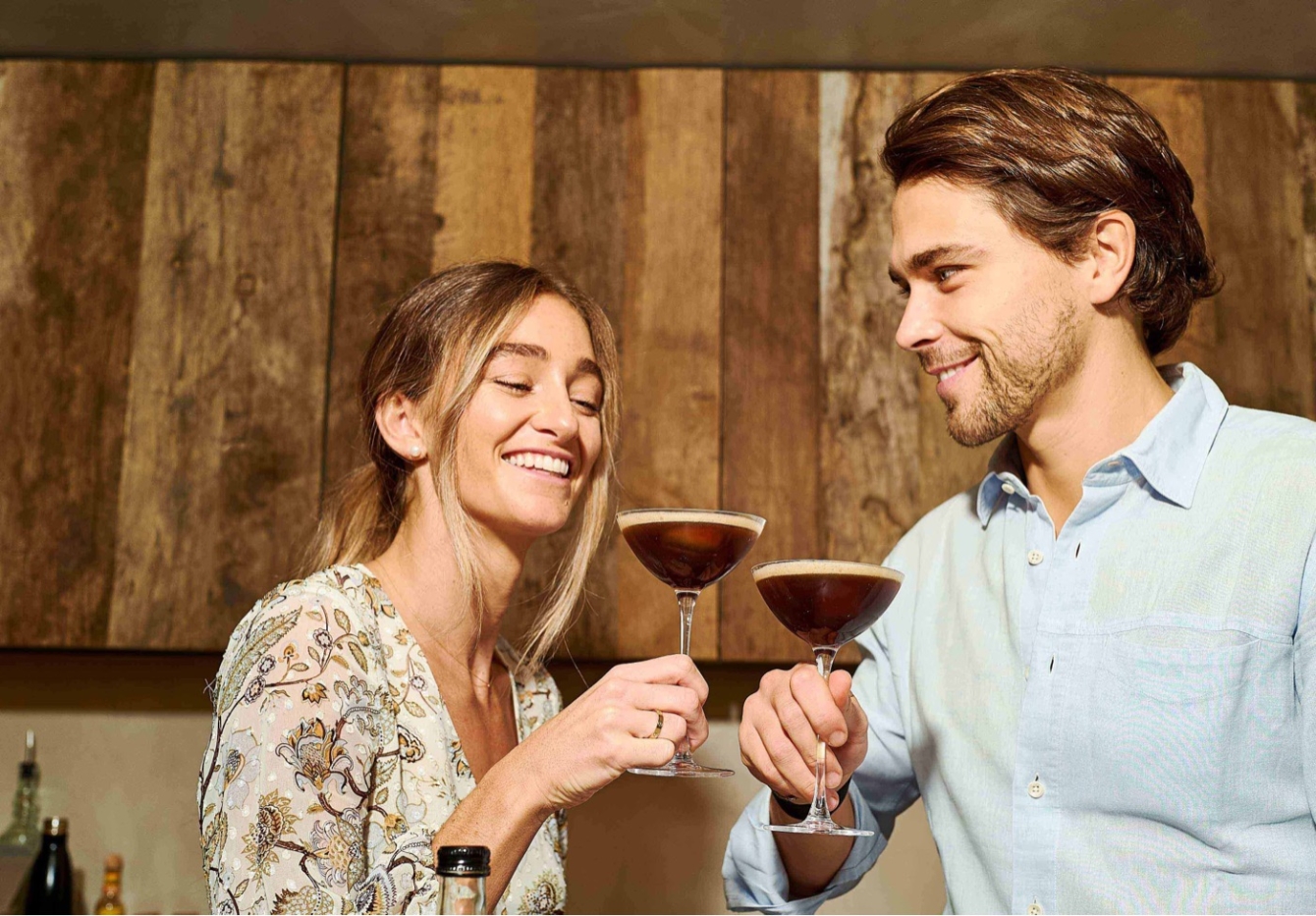
Can hedonism and healthy coexist in the same sentence? Is it possible to enjoy ultimate pleasure in the everyday while being healthy? We believe more is more is possible, provided you focus on healthy abundance — what we refer to as balanced living. It’s about enjoying guilt-free pleasure while eating and living well. After all, who says healthy has to be boring? As we ease into January, the most punishing month of the year it’s time to ditch the negative way we look at pleasure and delve into how we can live our health to the fullest.
Drink Better
Yes, you can enjoy a guilt-free tipple or two but try and make intelligent choices when you reach out for the bottle. Red wine is high in the antioxidant resveratrol but opt for a bottle which is low in sulphites. Fan of cocktails, try the MEDAtini which has 50% less sugar and calories than a standard espresso martini. Or if you want something stiffer, try a good quality vodka or gin, preferably organic and consider natural mixers such as the MEDA No-Lo options. Finally, remember to hydrate as you drink (one glass of water for each glass of the naughty stuff). And instead of a bottoms up, savour the flavour and go for a slow sip instead.
Banish the Fad Diet
We’ve all tried them — the yo-yo diets, the ‘wonder’ plans that promise to help you lose weight fast. Fad diets are often unhealthy due to the dramatic and punitive reduction in calorie and nutrition intake. And we know how easy it is to fall off the diet wagon and re-gain the weight we fought so hard to shed.
Try the 80/20 diet instead. Eat clean foods (ones which are good for you) 80% of the time, leaving you free to indulge in the naughty treats for 20% of the time. The best bit? It’s easy to make this diet part of a long-term lifestyle change.
Treat Yourself
You may go by the motto eat to live or live to eat. We say love what you eat. Nourishment isn’t just crucial for our physical wellbeing it is also an important mental tonic. Fancy a sweet or savoury treat without all the guilt? It’s all about balance. Reach for treats which include dark chocolate, maple syrup, dates or coconut sugar. Try a banana smothered in cashew butter (heaven!), or make your own spicy roasted nuts instead of munching your way through that crisp packet. It’s easier than you think to titillate the palette while keeping your gut (and your girth) in check.
Get High — Naturally
Dopamine, serotonin, endorphins, oxycontin. These all-natural chemical wonders of the brain allow us to experience pleasure with just the right dose of pow-wow. Try exercising regularly for a daily punch of vitality. Spicy foods, such as a hot curry once a week, are known to release feel-good beta-endorphins. Have that macchiato, that avocado, or even that knob of butter, foods which are rich in tyrosine, an essential ingredient in the production of dopamine.
Have Some Sex
Sex releases all sorts of good stuff including oxycontin, dopamine and adrenaline. And the best bit is, you can never have too much of it!
Get a Massage
Massage therapy can significantly reduce the impact of stress levels, thanks to the release of feel-good hormones such as serotonin. Kneading into the New Year is the perfectly delicious way to start 2021.
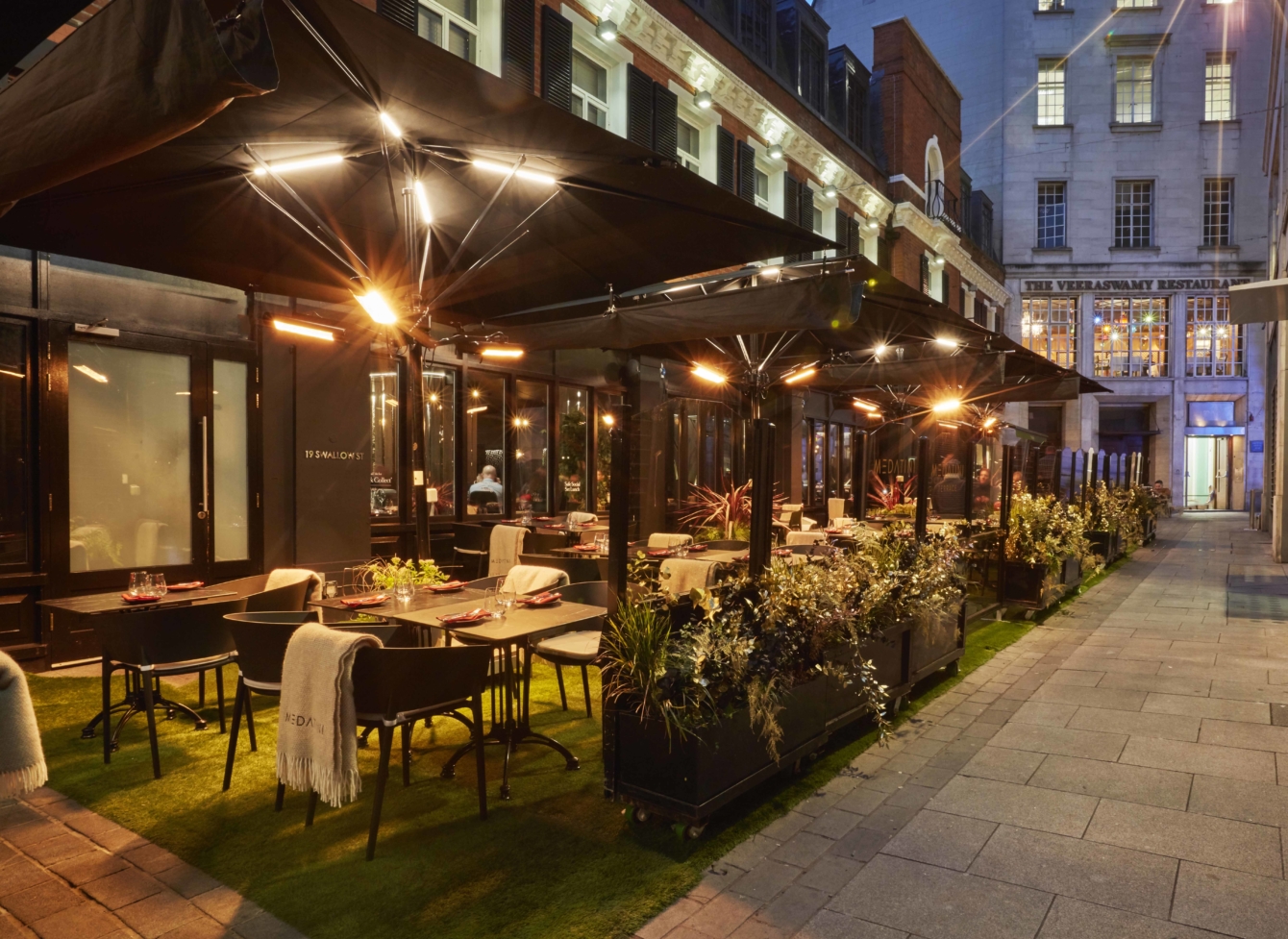
‘A true friend is someone who thinks that you are a good egg even though he knows that you are
slightly cracked,’ observed the much-loved, late American broadcaster, Bernard Meltzer. In
times of oddness, more than ever, people crave the shared experience of savouring beautifully
made drinks in a reassuringly comfy milieu. And being looked after on a heated terrace with a
good view of the golden leaves of autumn in cascade makes the effort of going out to meet loved
ones amidst a flustering global pandemic worth the professed risk. Some operators such as the
Dalloway Terrace at the Bloomsbury Hotel are inviting guests to BYOB (Bring Your Own
Blanket) which offers, in a commercial setting, a sense of the haven of home.
During the lockdown, Meda’s own nutrient enriched NO-LO mixology hampers proved very
successful, allowing imbibers to shape their own drinks and pay closer attention to their palates.
Furnished with a new or revived understanding of mixology, the home drinker is both inspired
and better placed to enjoy the suggestions of, and even challenge, expert bartenders when
taking the step to go out.
To take advantage of the rule of six, which allows multiple households to meet in the Capital
when outdoors, here are four venues offering, respectively, large gardens, handsome
courtyards, commanding terraces and hidden gardens. As the weather cools, keep an eye out for
the excitement around emerging warm cocktail serves, especially when made with the premium
CBD enriched Espresso Medatini, which benefits from bearing at least half the sugar and
calories of the conventional espresso martini…
Chelsea (SE1): The Ivy Chelsea Garden (theivychelseagarden.com)
Formerly the large, louche drinking den that was Henry J. Beans and now handsomely
reimagined, The Ivy on the Kings Road near Chelsea Old Town Hall celebrates the horticultural,
especially during the famous Chelsea Flower Show. The best spots are the sumptuous
conservatory and heated pergolas looking onto a fountain. As well as Meda’s own, deeply
flavoured Espresso Medatini, you can order the venue’s take on the Singapore Sling – The Ivy
Sling – which stars Plymouth Gin at its heart, further adorned with Benedictine and bitters.
Marylebone (W1U): Chiltern Firehouse (chilternfirehouse.com)
André Balazs’ labyrththine hotel complete with ceilings of latticed reels of firehoses in the
restaurant salvaged from the site’s previous incarnation has a very cosy hideaway of a bar.
However, it is the courtyard at the entrance which affords the best view of the handsome
architecture of this perennial favourite of various celebrities. Come the autumn, the large
selection of cool rosé is replaced by the Medatini and spirits elevated by Meda mixers, as well as
more gutsy wines from the Alps.
Seven Dials (WC2H): Louie (louie-london.com)
Billed as a journey through Paris, New York and New Orleans, Louie, one of the most significant
openings of the year, occupies the Covent Garden townhouse which was previously home to
L’Atelier de Joël Robuchon. The much-brightened ground floor brasserie features voodoo
elements, a juke box and hand planished bar counter, although it is the top floor bar with huge
speakers, fireplace and wall-mounted trumpet-like ice buckets which offer the most surprise
when the doors are opened onto the leafy terrace with retractable glass roof. Aiming to play
with the lighter side of darker spirits, expect Black Magic cocktails such as the Crocopolitan,
featuring Bourbon, hibiscus, toasted almond and coconut, as well as a unique take on the
Espresso Medatini.
Mayfair (W1J 5AT) Annabel’s (annabels.co.uk)
If you are lucky enough to have a subscription to what is arguably the most famous members’
club in the world, you can take advantage of the large, glamorous, seasonally themed garden
and, for cigar lovers, rooftop veranda. The Espresso Medatini has long been served within this
fantastical setting which also takes the prize for having made London’s most complex of
fragrance hand sanitiser…
Consultant to MEDA, Douglas Blyde
Douglas Blyde is the drinks columnist for the London Evening Standard magazine and the
author of an annual restaurant guide, Wine List Confidential for Drinks Business.
Memorable experiences on his journey of tastes have included dining in, then ultimately
legitimately escaping from the albeit dry restaurant at high-security prison, HMP Highdown,
shooting, being blooded by, then eating grouse for lunch on the Glorious Twelfth of August in
the Highlands, malt in hand, as well as odysseys to meet producers in South Africa, Lebanon,
Thailand and China.
Douglas hosted the 50 Best Bars awards for William Reed and is a drinks consultant to both
aristocrats and business leaders.
He has been realised as a cocktail, the ‘Jekyll & Blyde’ which originated at Fortnum & Mason’s 45
Jermyn Street restaurant and is now served at Fortnum’s 101 in Hong Kong.

It’s that time of year again where we ask “when do the clocks go back?” and try to make the most of the daylight hours during the winter season. The change of the clocks often results in a state of confusion for the majority of the country, as we lose or gain an hour throughout the course of the year. But why do we change the clocks anyway? Before we find out, let’s answer the most important questions first:
When do the clocks go back?
Sunday, 25th October 2020.
What time do the clocks go back?
At 02:00 on Sunday morning, 25th October 2020
Do we get an extra hour of sleep?
Yes! This change in time is “the good one” where we get an extra hour in bed on the Sunday morning.
Now that we’ve sorted that, here are some little-known facts about this annual ritual:
1. Why do the clocks change?
It was William Willett’s idea. The proposal for Daylight Savings Time was put forward by William Willett in 1907, as he argued that we were wasting important daylight by rising at the same time in the summer as we did throughout the winter months. He believed we should advance our clocks by 80 minutes via four incremental sets of 20 minutes during April. This would then be reversed in the same fashion during September.
2. When did the clocks first go back?
The clocks first changed in 1916. However, though Willett proposed this in 1907, Britain failed to adopt the idea until 1916, a month after Germany had taken up the idea. The idea was then particularly attractive as the First World War was taking its toll on the nation and anything that could improve productivity was encouraged.
3. Benjamin Franklin joked about changing the clocks back in 1784
Daylight Savings Time was first satirically proposed by Benjamin Franklin in a letter he addressed to Parisians in 1784. His argument was that more daylight would mean people wouldn’t waste candles by having to burn them for longer.
4. Why do clocks change on a Sunday?
Clocks change on a Sunday thanks to the EU. Daylight Savings Time is always kept between the last Sunday of March and the last Sunday of October, and all changes take place at 01:00 GMT as according to an EU directive.
5. Changing the time helped coal supply during World War One
The main reason for turning the clocks back was to make the most of the daylight available in the summer. Another argument, however, was that the different hours would affect the amount of domestic coal usage, thereby increasing the supplies available for manufacture and for supporting WWI.
6. Dairy farmers in the North like changing the time most
There are many other reasons why we change our clocks twice during the year. Agriculture is a major concern, with farmers working hours being more affected by the amount of daylight available in the morning than the rest of us. Farmers often rise or begin work at around 5 in the morning. If the clocks were not adjusted, dairy farmers located in the North of the country would not see dawn until after 9 o’clock, meaning hours of working in the dark.
7. Spring forward, fall back
Next time you’re thinking “when do the clocks go back?” simply memorise the phrase “spring forward, fall back”. The clocks always spring forward an hour on the last weekend in March, and fall back on the final weekend of October.
8. Clocks go back around the world
Only around a quarter of countries in the world have any type of clock change at all and these don’t necessarily occur on the same schedule. Not even all the U.S states operate on the same schedule, with parts of Arizona, Hawaii, Puerto Rico, the U.S Virgin Islands and American Samoa declining to follow suit.
9. Is it darker in the morning when clocks go back?
It’s going to get dark, very dark. At the height of summer, on the summer solstice, the UK enjoys a hefty 16 hours and 50 minutes of sunlight. However, that is going to shrink to a measly 7 hours and 40 minutes on the winter solstice. Putting the clocks back helps us take advantage of the little daylight we get.
What is the effect of putting the clocks back?
Setting the clocks back by an hour at the end of October means the mornings are lighter, which can have an effect on the time you wake up in the morning. To make sure you’re getting sufficient rest, make sure your bedroom will be dark enough for you to achieve your full 8 hours.
Wake and sleep time are the major effect that the clocks changing can have, with many struggling to get enough rest. One study suggested a spike in reported heart attacks in the week after clocks go forward, possibly due to sleep loss. To ensure you have the best chance of getting a good night’s sleep, consider altering your bedtime by ten minutes over a few days in anticipation of the change.
You should also continue to practise good sleeping habits, by avoiding screens a good hour before bedtime, avoiding caffeine and other stimulants and making sure you have a comfortable sleeping environment in which to spend your extra hour of sleep.
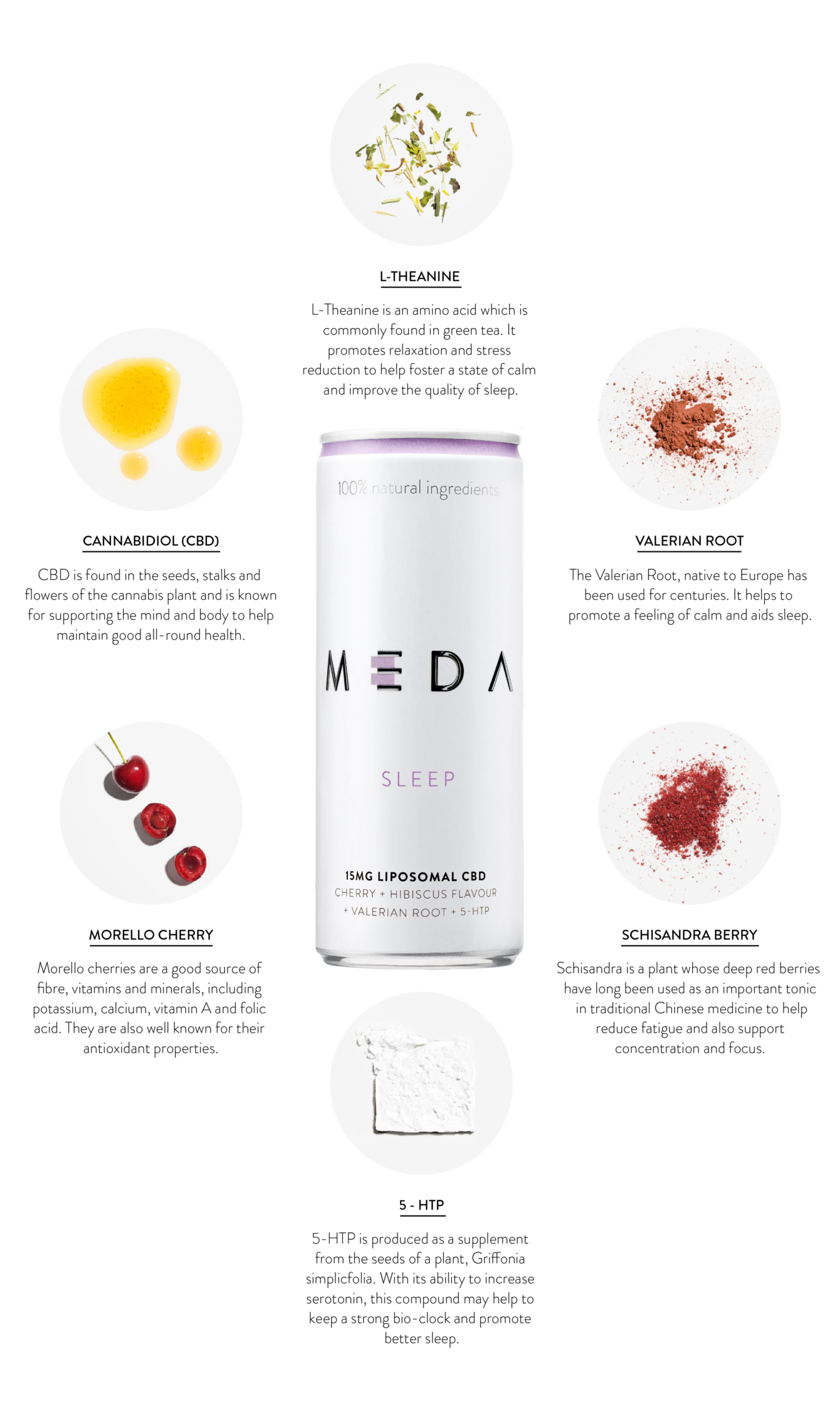
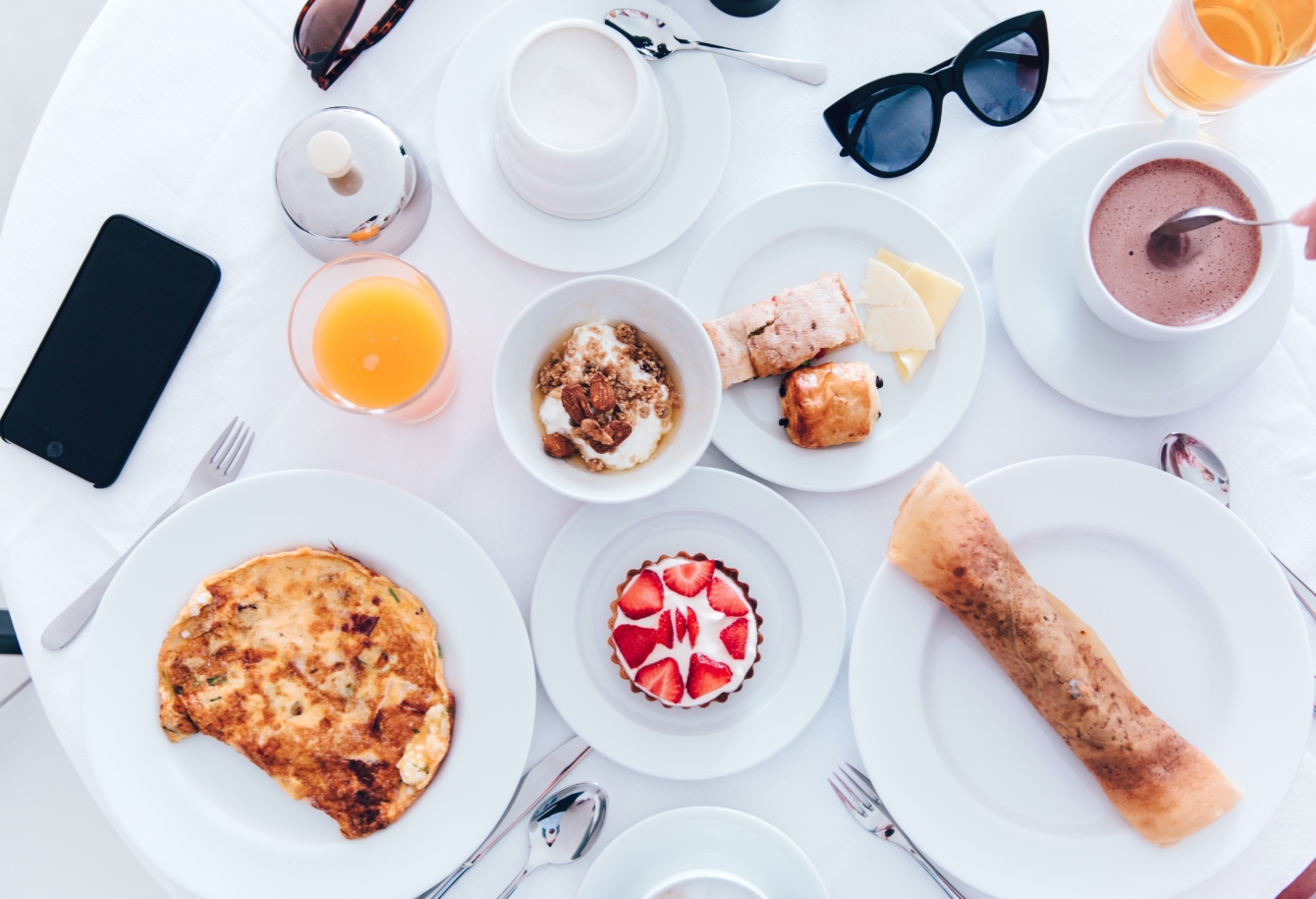
Very likely inspired by his hangover, it was the British writer, Guy Beringer who defined the concept of ‘brunch’ in his 1895 treatise, ‘Brunch: A Plea’. The ‘hospitable meal’ he engagingly wrote, is ‘cheerful, sociable and inciting’ of talk, putting one in ‘good temper’ and sweeping away ‘the worries and cobwebs of the week.’ Occurring at a later point in the day than breakfast, Beringer liked the fact ‘you get up when the world is warm, or at least, when it is not so cold.’ Not having to rise so early also served as an incentive to revel in late-night mischiefs. ‘You are able to prolong your Saturday nights, heedless of that moral “last train” – the fear of the next morning’s reaction.’
A portmanteau of ‘breakfast’ and ‘lunch’, Beringer’s brunch would commingle ‘the tea or coffee, marmalade and kindred features of the former institution with the more solid attributes of the latter’, ideally starring a ‘main of fish and one or two meat courses’ which, given that Beringer was writing in Hunter’s Weekly, he may himself have fished and stalked.
These days, with the culinary culture of the world available on a plate far from the original land in which it was created, the nonchalant weekend moment can encompass a wider gamut of fodder, ranging from smashed avocado on toast or eggs benedict, to cinnamon toast, crêpes and waffles, and even oeufs en meurette with Burgundian sauce, enfrijoladas and enchiladas, smoked sturgeon, and dim sum…
In lieu of tea and coffee, Beringer allowed ‘substitutes’ of beer and whiskey’ and 125 years after ‘Brunch: A Plea’ was written, I like to think that he would have greatly approved of the taste and feel of MEDA’s Madagascan vanilla, tonka bean and golden rum-enriched Medatini, fusing ABV alongside cold-brewed coffee beans and premium CBD.
Being super easy to make – simply shake the Medatini’s contents in an ice-filled shaker and pour with into a chilled coupe – even the home brunch can become superlative. Alternatively, enjoy a brunch free from washing-up in a haven of hospitality such as Selfridge’s Brasserie of Light, where the Medatini can be ordered alongside two eggs ‘any way’ or, if feeling flush, their wowing lobster and prawn crêpe gratin…
Here’s to the next 125 years of brunching!
Douglas Blyde.

The late, great, inspiring barkeep, Dick Bradsell invented the ‘vodka espresso’ in the early 1980s
at the Soho Brasserie. Legend has it, he was approached by a future supermodel requesting a
potion to in no uncertain terms, wake her up so she could continue her blissful nocturnal
partying. Bradsell, who also created the Bramble, a gin sour pepped with blackberry liqueur,
had a coffee machine on standby behind his bar and resourcefully shook up a shot of espresso
with vodka, sugar syrup and ice. From then on the coffee cocktail became the drink of the
decade.
When served on ice, the vodka espresso later morphed into the ‘Pharmaceutical Stimulant’ at
The Pharmacy, Notting Hill in the presence of the art of Damian Hirst. However, neither name
chimed with a public whose fondness for the ‘Espresso Martini’ endures to this day – even
though a triangular glass does not in itself a martini make…
But, like people and politics, drinks are not stuck in aspic. With half the sugar and calories of the
standard, full-pelt, coffee liqueur-swamped serve which you’re likely to encounter at everyday
bars, our calibrated Espresso Medatini gains richness from Madagascan vanilla, tonka bean
drops and the very essence of golden rum, blended, with small batch vodka, enticingly aromatic
cold brew coffee and of course, superlative CBD.
To make it, take two martini glasses from the freezer, pour the little black bottle of Espresso
Martini into an ice-filled cocktail shaker and shake it like you mean it before pouring into the
glasses, ideally from a height to create a sense of theatre and best encourage the thick,
persisting, creamy, golden cap to form. Garnish with three coffee beans towards the side of the
glass which you drink from to heighten the aromatics. The result, we hope you agree, is utterly
sumptuous, pristine and exhilarating enough for the most aspirational of future supermodels…
Douglas Blyde.
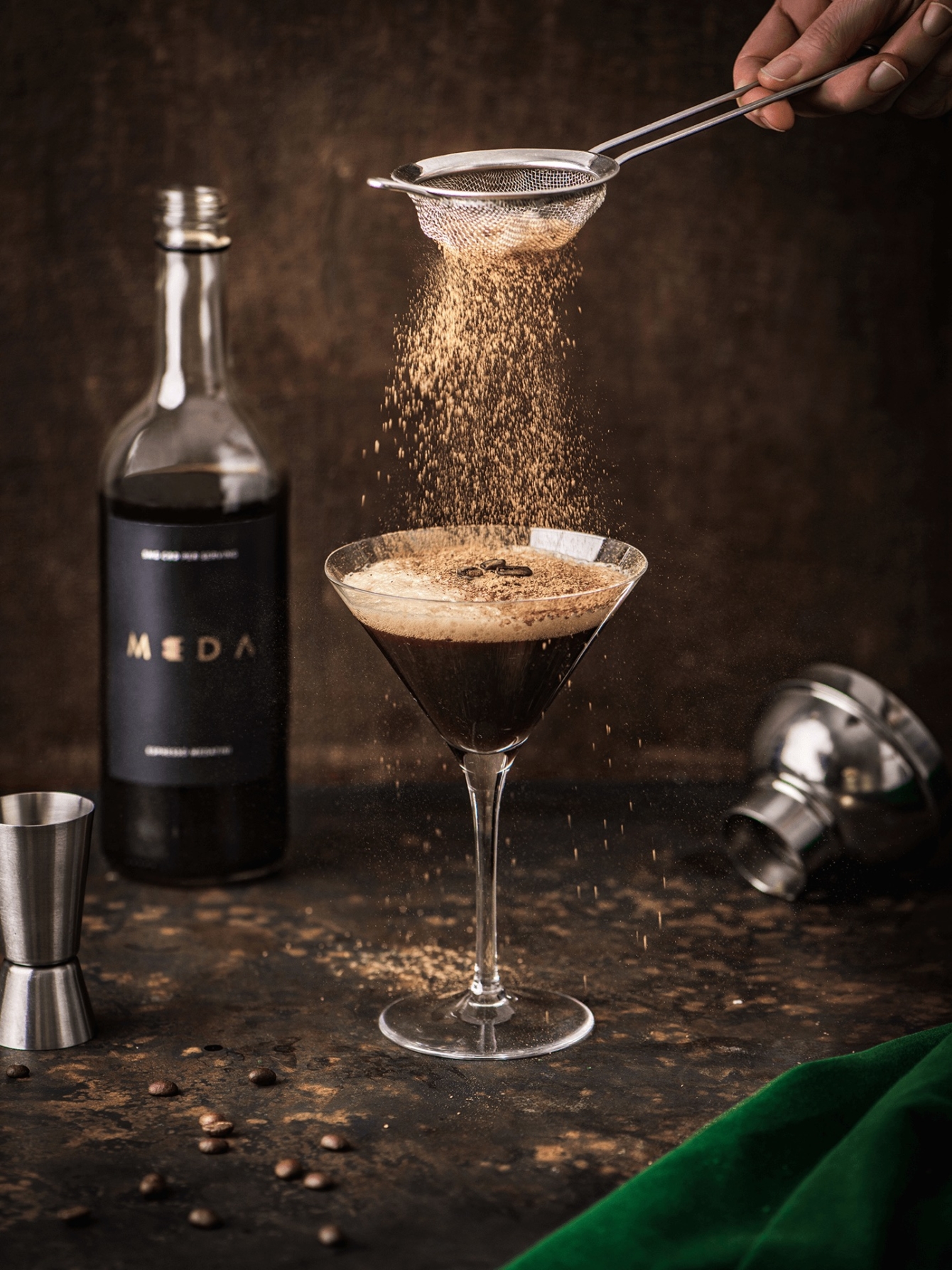
Consultant to MEDA, Douglas Blyde
Douglas Blyde is the drinks columnist for the London Evening Standard magazine and the
author of an annual restaurant guide, Wine List Confidential for Drinks Business.
Memorable experiences on his journey of tastes have included dining in, then ultimately
legitimately escaping from the albeit dry restaurant at high-security prison, HMP Highdown,
shooting, being blooded by, then eating grouse for lunch on the Glorious Twelfth of August in
the Highlands, malt in hand, as well as odysseys to meet producers in South Africa, Lebanon,
Thailand and China.
Douglas hosted the 50 Best Bars awards for William Reed and is a drinks consultant to both
aristocrats and business leaders.
He has been realised as a cocktail, the ‘Jekyll & Blyde’ which originated at Fortnum & Mason’s 45
Jermyn Street restaurant and is now served at Fortnum’s 101 in Hong Kong.
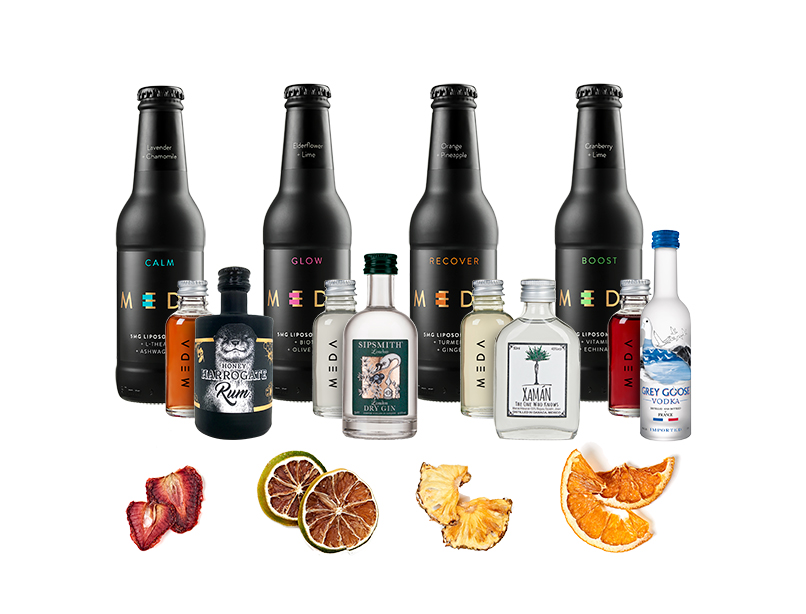
Ever wondered just why you get that fuzzy head the day after one too many cocktails? Whether it is disrupted sleep and low energy or nausea and headaches, a hangover is never fun. And while alcohol is definitely partly to blame; it takes two to tango. The second half of this duo is… sugar.
When we consume large amounts of added sugars, particularly in a liquid form, we send our blood glucose and insulin levels sky high. This peak of quick energy is followed by a significant drop. And when our blood sugar levels drop, we can feel dizzy, nauseous, hungry, moody and may develop headaches. Sound familiar?
Did you know that your standard tonic water contains nearly the same amount of added sugar as your favourite cola or lemonade! And while soda water and lime might be the healthy option, it doesn’t exactly blow the flavour water does it?
So how can we enjoy our spirit of choice without the added sugar…have you been introduced to MEDA’s CBD cordials? While cordials tend to be a mixture of flavours and sugar syrup, MEDA’s cordials are a blend of natural herbs, spices, juices, CBD and monk fruit. By using monk fruit, a natural sugar alternative that contains no sugar or calories, these cordials are low in sugar and calories and their taste is delicious.
There are five flavours to choose from: Elderflower and Basil, Strawberry Bitters, Blackberry Citrus, Peach, Lemongrass and Mint + Chilli Pineapple.
Here are some of my favourite ways to use MEDA’s cordials to quench your thirst:
For the No-alcohol drinkers
Mix together a handful of berries, ½ a cup of coconut water, one bottle of the blackberry citrus MEDA cordial and a splash of lemon juice. Serve over ice for a refreshing tipple.
Mexican style
Mix 50ml of mezcal or tequila, one bottle of MEDA’s Chilli Pineapple cordial, a good splash of lime juice and top-up with soda. Serve in a short glass with ice and a rub of salt on the rim.
Pimped-up G&T
Mix 50ml of your favourite gin (we love Sipsmith) with your Elderflower and Basil MEDA cordial and a splash of lime juice. Pour in a long glass over ice and top up with MEDA’s Glow mixer for the perfect alternative to your after-work G&T.
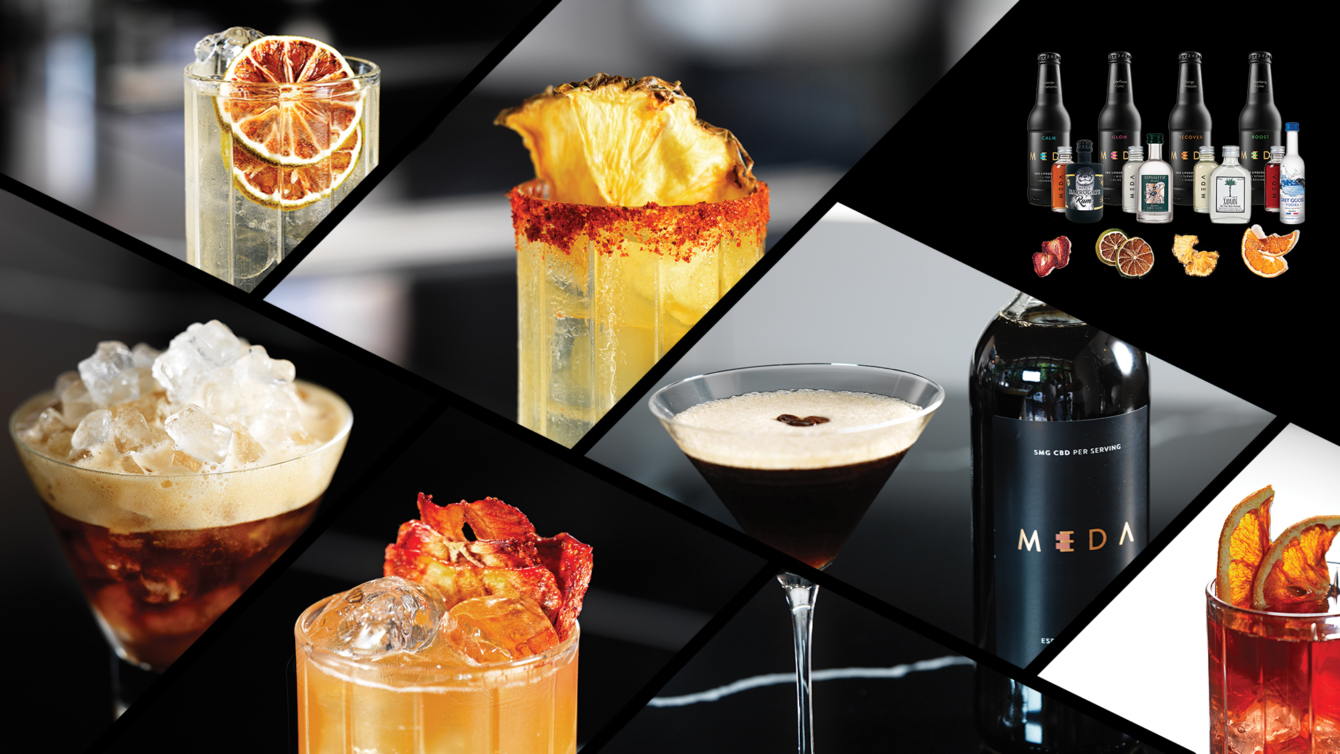
With sunshine comes spritz a plenty — cocktails on the rocks and a desire for bubbles and fizz! In an ideal world, your favourite cocktails would be low in calories, sugar and never followed by the lethal morning after hangover.
While alcohol is not the healthiest part of any diet, there are ways to enjoy summertime fun without having to forgo your health goals. A few tweaks and smart swaps can make healthy choices easy, delicious, and refreshing.
Here at MEDA, we have some of our favourite summer cocktails to share with you — providing all the cocktail fun without the high doses of sugar and calories.
Sunshine in a Glass
Looking for a refreshing and healthy sparkling CBD beverage? The MEDA Glow is a light and refreshing drink filled with flavours of elderflower and lime, and the MEDA Boost is a blend of cranberry and lime — both pair well with vodka or gin. While the MEDA Recover is an orange and pineapple flavoured drink that pairs well with mezcal or vodka and our MEDA Calm combines lavender and chamomile flavours and pairs well with rum or gin. Alternatively for an alcoholic spritz serve your chosen MEDA with a splash of Chapel Down.
For a refreshing alcohol free spacer try serving your MEDA with added sparkling water over ice. By adding sparkling water you are keeping yourself hydrated, warding off any hangovers or picnic in the park induced heatstroke.
Make a Frozen Medatini
Have you discovered MEDA’s healthed-up take on the Espresso Martini yet? The Espresso Medatini is a blend of premium Vodka, Cold Brewed Coffee, Madagascan Vanilla, Cacao and 10mg CBD. It is delicious! Not only is the choice of using premium ingredients a health win here, the Medatini has 50% less calories and sugar than a standard Espresso Martini!
Want to get even more chilled? Put your Medatini mix in a blender with a cup of ice and blitz until smooth (or leave a little texture if you prefer) or simply pour over ice cubes in a pre-frozen glass.

This week is Men’s Health Week. A week dedicated to putting the spotlight on men’s health issues at a global level. This year the theme is based around COVID-19 and aims to take action to help men get on top of their health.Our resident nutritionist, Clarissa Lenherr, shares her five things to do today to optimise men’s health.
Reduce stress
When we are stressed, we secrete our stress hormones, one of them being cortisol. This particular hormone is actually linked to increased fat storage in men, particular around the abdominal area. Work, relationships, current affairs, poor diet, too little or too much exercise – all of these things can contribute to our stress levels.
Incorporate one stress management technique today to reduce those cortisol levels. Think meditation, getting into nature for 20 minutes a day, doing some exercise or getting the creative juices flowing.
Take 30g of fibre
Get in that roughage! While most people tend to think fibre is solely important for our digestive system, evidence suggests it contributes to a great deal more. Fibre, especially soluble fibre, has been shown to reduce our ‘bad’ kind of cholesterol known as LDL – the one linked to cardiovascular concerns. This soluble fibre dissolves in water and actually forms a gel like substance that can help move through the digestive system pulling out fat, dietary cholesterol and sugars to be excreted. This prevents a build up of cholesterol in the body and blood, which can lead to deposits in arteries and potentially leading to cardiovascular disease.
The recommended daily intake of fibre is 30g in the UK, yet the national average consumption is just 18g. Increase your intake of soluble fibre by reaching for foods such as beans, oats, sweet potatoes, broccoli and fruits.
Be mindful of red meat consumption
While red meat is a great source of protein and micro-nutrients such as zinc, b12 and iron, over-consumption has been linked to higher incidence of colorectal cancer, heart disease and type II diabetes. The NHS suggests no more than 90g per day of red meat, such as beef/lamb/pork however for optimal health I would suggest no more than 300g per week of red meat. Swap out your typical red meat dishes with vegetarian plant based options such as a Chilli con Beanie or a Lentil Bolognese.
Don’t forget omega-3
Omega-3’s are a type of beneficial fatty acid found in oily fish such as salmon, mackerel, anchovies and herrings or plant based foods such as walnuts and flax seeds. So what makes them so important? Firstly omega-3 fats are anti-inflammatory and can protect the heart and arteries. In Japan, Greenland and the Mediterranean where diets are higher in oily fish, fewer people tend to have heart disease compared to those countries with comparably low intake of omega-3 fish!
Reach for two portions of oily fish a week or if reaching for plant based sources aim for four 30g servings. Supplementing with an omega-3 fish oil may also be beneficial, particularly if you struggle to consume these foods. We like Bare Biology’s Lion Heart Blend.
Introduce strength & conditioning
Endurance and weight training can help boost production of testosterone, one of the chief male sex hormones. One study in 2007 showed that men who engaged in strength training three days a week across one month had higher testosterone levels, for both short and long term.
Include two strength training exercise sessions per week. For inspiration head to Bradley Simmonds on Instagram to catch his Instagram Live workouts. https://www.instagram.com/bradleysimmonds/?hl=en
Referenceshttps://pubmed.ncbi.nlm.nih.gov/17051372/

Our libidos are complicated and influenced by changes in our mood, diet, weight, age, stress levels and environment — to name a few. There are a number of natural libido boosters that may be worth playing with!
Maca
A Peruvian root that can be taken as a powder or in a supplement. Maca has been used traditionally for centuries as a natural aphrodisiac. A double-blind study in 2002 showed that a 12 week ingestion of maca increased the sexual libido in men versus those taking a placebo.
Plus it tastes like butterscotch so is a great thing to throw into smoothies, baking, or top onto yogurt. Be mindful that maca can influence estrogen levels and should not be taken by anyone with hormonal imbalance (unless you are being advised by your nutritionist/GP).
Panax Ginseng
Ginseng is an ancient herb that has been traditionally used for years due to its reported aphrodisiac properties. For women, it has been shown in studies to improve the libido of post-menopausal women after taking three 1g capsules every day for a fortnight and for men it is reported to help improve erectile function.
Find Panax Ginseng in MEDAHUMAN’s ENERGY drink and to learn more about the power plant, read our spotlight here. https://medahuman.com/spotlight-panax-ginseng
CBD
Stress can be a libido killer. Whether you are thinking about your to-do list, worrying about the future or unable to switch off from work — none of these thoughts are very sexy! So how can we de-stress to help us get in the mood?
Enter CBD, which has been shown to reduce anxiety and stress by working on serotonin (our happy hormone) receptors. Why not try our MEDAHUMAN’s RELAX drink which delivers 20mg of CBD alongside calming herbs such as chamomile and lavender? https://medahuman.com/product/calm
Don’t forget the importance of good nutrition
While trying out some natural supplements may be effective for some, there is nothing more important than eating a well balanced diet. Ensuring you are maintaining a healthy weight, exercising, managing stress and getting adequate nutrients through your diet, will set you up for good health, and give you the foundations required to take charge of your libido!
*The information and content of this article is provided only for informational purposes. It is not meant in any way as a substitute for the professional advice provided by your physician or any other healthcare professional.
References
https://pubmed.ncbi.nlm.nih.gov/12472620/https://pubmed.ncbi.nlm.nih.gov/20141583/https://pubmed.ncbi.nlm.nih.gov/1969666/https://www.auajournals.org/article/S0022-5347(05)64298-X/abstract